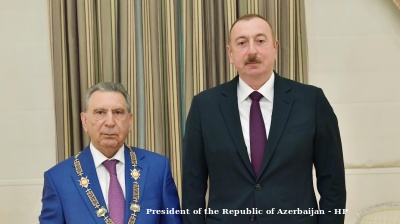Rare earth element (REE) resources in Mongolia are viewed by some observers as potentially very much part of the solution when it comes to countering China's global monopoly on these critical minerals. However, the likelihood of Mongolia becoming a major REE producer any time soon seems rather low due to several obstacles.
The most significant is the lack of proper policy and legislation to accommodate REE mining.
In a survey conducted in 2009, Mongolia's REE deposits were estimated as equivalent to 16.8% of known REE reserves worldwide, but the data was based on a general survey of all minerals rather than REE specifically. “It was an estimate because it was based on a general survey of all minerals, rather than a specific rare earth survey, but no other survey has been made on REE in the country,” said Dagva Myagmarsuren, a mining consultant at Qualified Management Consultants.
Dagva added: “As a result, we only have very few known REE deposits, and all of those have only extended to exploration phases, they have not yielded much beyond that.”
It might be thought that all of the major REE deposit licence-owning companies present in Mongolia have sought to find ways to move on to REE mining, but for the past decade, none of the explorers have seen much progress in making REE production in the country a reality.
An industry insider, who requested anonymity, told bne IntelliNews that recent interest from countries including Germany and South Korea in Mongolia's REE deposits amounted to only gestures against China. They were hype without any real action, they said, adding: “For the past decade, Mongolia has been mentioned as a potential REE mining country, but without proper legislation and given the poor track record in protecting investors and awarding a share of the mining profits to the public, the mining of REEs will remain a pipe dream for Mongolia.”
The insider further noted that many legislators remained unfamiliar with mining and that Mongolia's track record in the sector was rather dismal.
The country has struggled to properly sell coal, with some operations running at a 90% loss, and it blundered in a major way with Anglo-Australian Rio Tinto’s giant Oyu Tolgoi copper-gold mining project, with its cost blowouts, delays and other difficulties legion.
The insider spoken to was sceptical that the government would be able to mine and refine REEs properly given a lack of experience and potential environmental destruction. Moreover, the government was ill-prepared to deal with public backlashes that mining outcomes typically bring, they said.
Since 2012, the state has restricted mining licence issuance. The only four REE deposit ventures in Mongolia attempting to attract investors remain stagnant, with no active production on top of exploration.
Officials have accused foreign miners of using their licences as collateral for loans rather than cooperating with the government. The riposte from most of the companies is that they can do little else given the lack of wider mining sector progress.
Even if Mongolia finds its way out from this stagnation and attracts investors with proper policies and legislation, there are few countries that could help deliver the technological expertise needed to separate and refine REEs. Large sums of investment would be needed to make such progress a reality in Mongolia.
China, which controls 80% of global REE processing capacity, is actually the most likely candidate when it comes to establishing the proper refining and processing of REEs in Mongolia. But China has in no way been hyping up Mongolian REEs. In common with its lack of interest in sourcing more Russian gas via pipelines laid across Mongolia, Beijing has very little interest in Mongolia's REEs.
Not all hope, however, is lost in innovative Mongolian mining. Local experts believe that lithium brine deposits could be the next big thing for Mongolia after copper. Tremendous progress has been made in mining such lithium. Companies such as ION Energy have taken impressive strides in the past few years, lately sparking interest from Chinese entrepreneurs.
Features

The fall of Azerbaijan's Grey Cardinal
Ramiz Mehdiyev served as Azerbaijan's Presidential Administration head for 24 consecutive years, making him arguably the most powerful unelected official in post-Soviet Azerbaijan until his dramatic fall from grace.

Ambition, access and acceleration – Uzbekistan’s Startup Garage opens free academy for entrepreneurship
Aim is to train 50,000 young founders by 2030.

Ukraine’s growing energy crisis promises a cold and dark winter
Since the summer, Kyiv has changed tactics. Given the almost complete failure of Western oil sanctions to curb Russian oil exports, it has been targeting Russian oil refineries. The Kremlin has struck back, targeting Ukraine's power system.

Russia, China sign off on Northern Route shipping deal to slash global freight times
Russia and China have signed a landmark agreement to develop and commercialise the Northern Sea Route (NSR), after Beijing tested the route last month, that could slash Europe-Asia cargo transit times and challenge the primacy of the Suez Canal.




